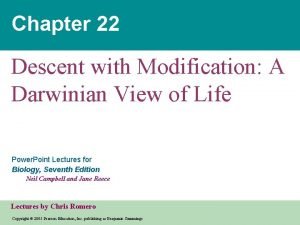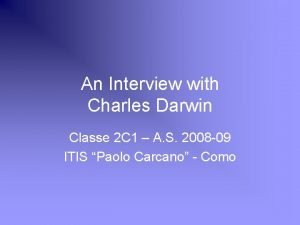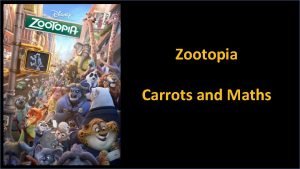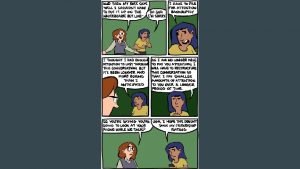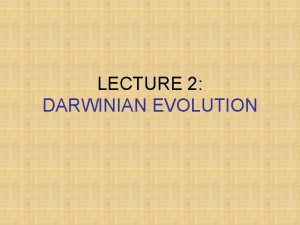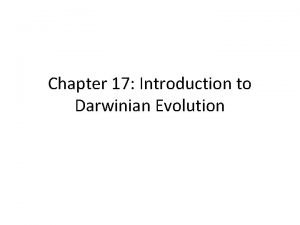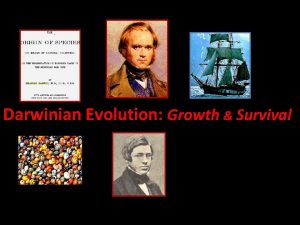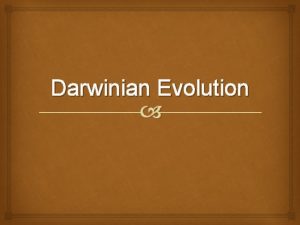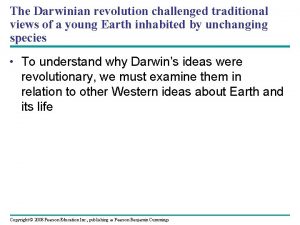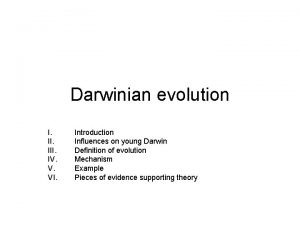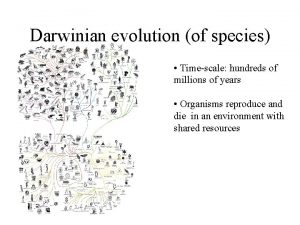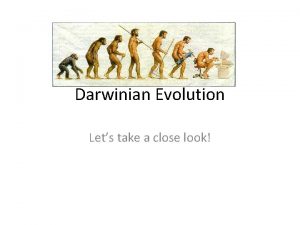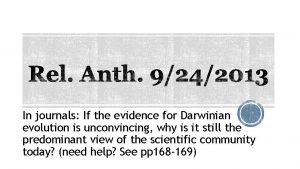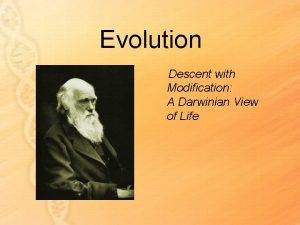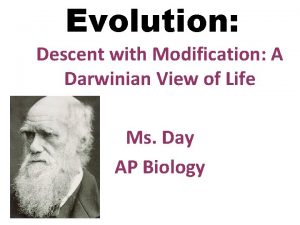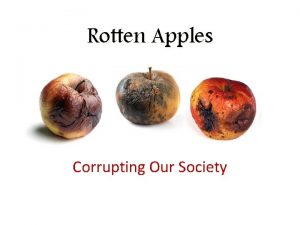Evolution In A Nutshell I The Darwinian Revolution
























- Slides: 24

Evolution In A Nutshell

I. The Darwinian Revolution n Began in the 19 th century. n 1831 voyaged on the HMS Beagle n. Only 22 years old

I. The Darwinian Revolution n Traveled South America’s coastline n Collected flora and fauna

n Brazil, Argentina, Tierra del Fuego, and Andes Mountains n Europe

n. Temperate species were closer to tropical species of South America than temp. species of Europe

II. Galapagos Islands n. Formed from volcanoes, off the coast of Equador

II. Galapagos Islands n. He collected 13 different species from the islands. n. They differed by beak size n. Diet decided

n. Some occupied more than one island n. Different niches n. Darwin began to realize the Earth was much older than expected.


n Lyell’s book Principles of Geology helped him to understand this idea.

III. Focus on Adaptation n. The finches were actually different species n 1837 began the first notebook on the origin of species

III. Focus on Adaptation n. Origin of new species (speciation) and adaptations are closely related processes

n Two populations could be isolated (geographic/reproductive isolation) n Over time become new species

n. This is what is believed to happen to the finches of Galapagos

n 1840’s Darwin had formed his theory of natural selection n. Wanted to make it more complete before publishing.

n Alfred Wallace n Wallace’s theory identical but Darwin’s more complete

n Darwin finished The Origin of Species in 1859 n Father of Evolution n Darwin used the phrase “descent with modification”

Proposing Natural Selection n Organisms produce more offspring than can survive. (Fish can lay millions of eggs) n In any population, individuals have variation. (Fish may differ in color, size, and speed. )

n Individuals with certain useful variations survive to reproduce passing traits on to offspring. n Over time, populations may change in appearance.

Natural Selection n A mechanism for change in populations. n Useful variations reproduce (adaptive traits) n Individuals w/out trait die (maladaptive trait)


n Darwin thought of life as a branching tree with multiple branches from a common trunk. n At each fork is a common ancestor to all evolutionary lines of descent branching from that fork.

n Species that are similar share a common ancestor at a recent branch point

n Less closely related species share a common ancestor at a earlier branch point n Most branches are dead ends since about 99% of all species that ever lived are extinct
 Descent with modification: a darwinian view of life
Descent with modification: a darwinian view of life Darwin
Darwin Zootopia carrots
Zootopia carrots Nlp in a nutshell
Nlp in a nutshell Grammar in a nutshell
Grammar in a nutshell How to write links in apa format
How to write links in apa format History of the world in a nutshell
History of the world in a nutshell Photosynthesis in a nutshell
Photosynthesis in a nutshell Present tenses
Present tenses Bfs in a nutshell
Bfs in a nutshell Web design in a nutshell
Web design in a nutshell Itil in a nutshell
Itil in a nutshell Definition of third agricultural revolution
Definition of third agricultural revolution Russian revolution vs french revolution
Russian revolution vs french revolution Could the french revolution have been avoided
Could the french revolution have been avoided Lời thề hippocrates
Lời thề hippocrates Vẽ hình chiếu đứng bằng cạnh của vật thể
Vẽ hình chiếu đứng bằng cạnh của vật thể Phản ứng thế ankan
Phản ứng thế ankan Quá trình desamine hóa có thể tạo ra
Quá trình desamine hóa có thể tạo ra Các môn thể thao bắt đầu bằng tiếng bóng
Các môn thể thao bắt đầu bằng tiếng bóng Hát kết hợp bộ gõ cơ thể
Hát kết hợp bộ gõ cơ thể Sự nuôi và dạy con của hổ
Sự nuôi và dạy con của hổ điện thế nghỉ
điện thế nghỉ Dạng đột biến một nhiễm là
Dạng đột biến một nhiễm là Biện pháp chống mỏi cơ
Biện pháp chống mỏi cơ
